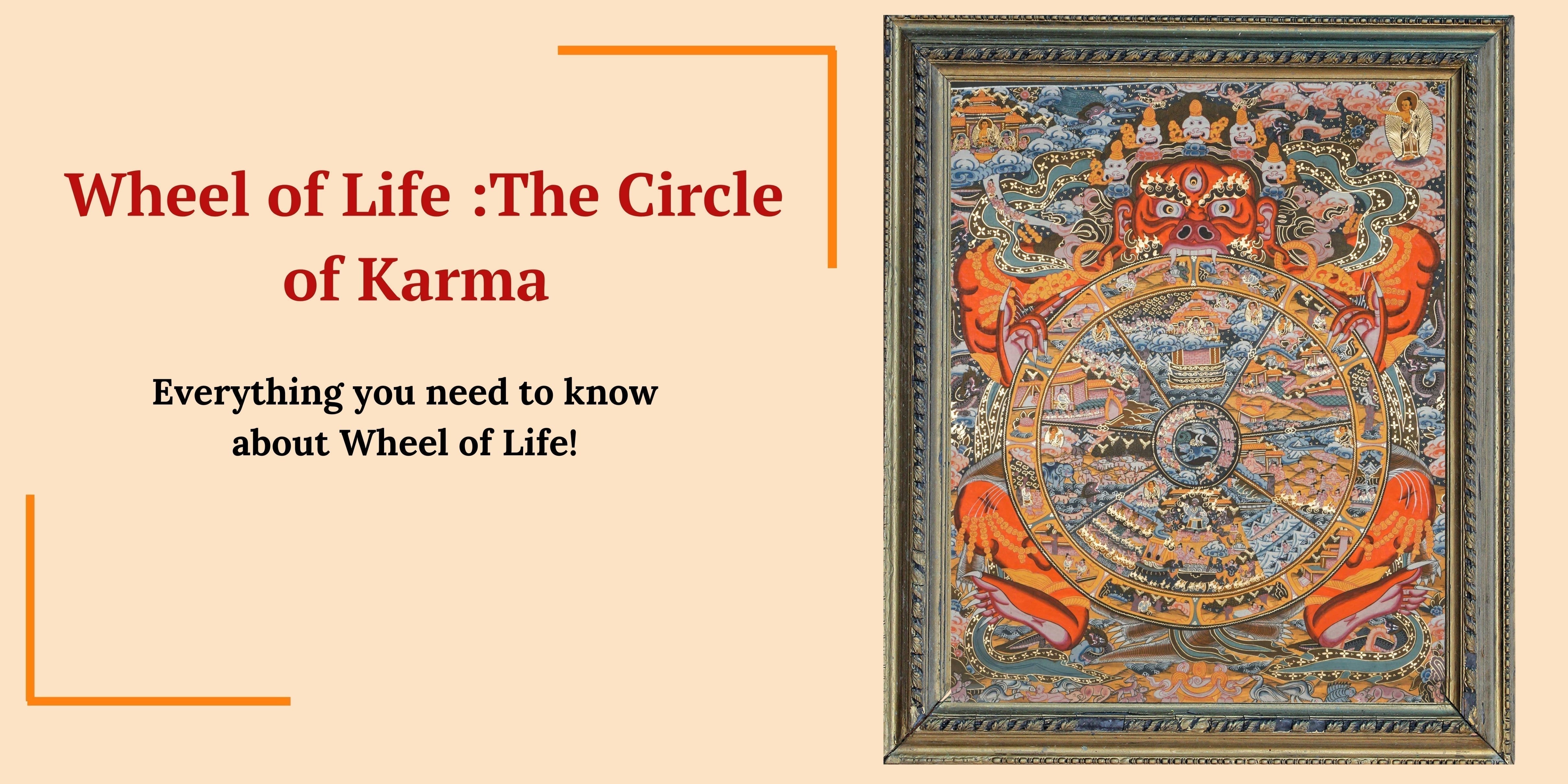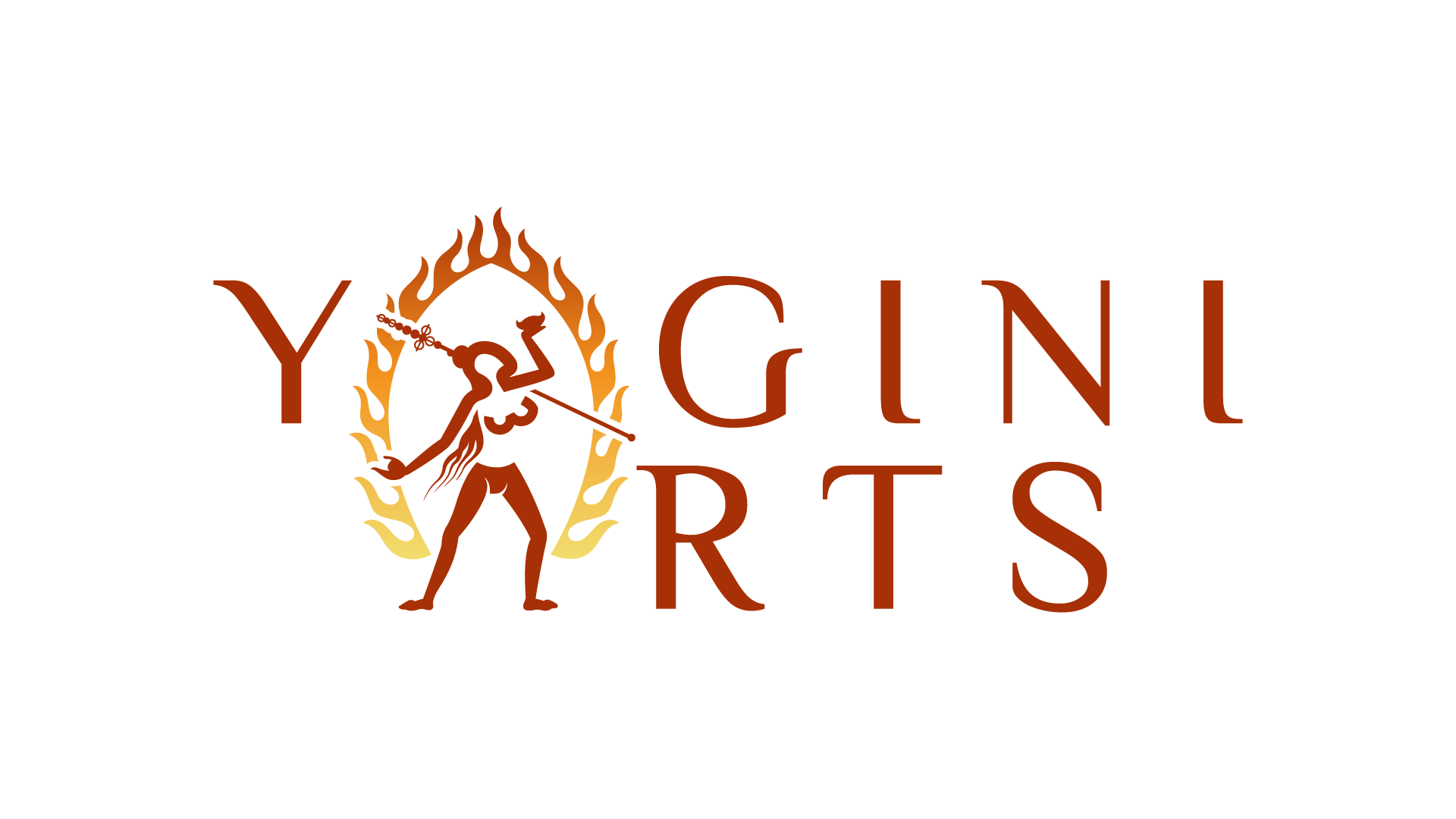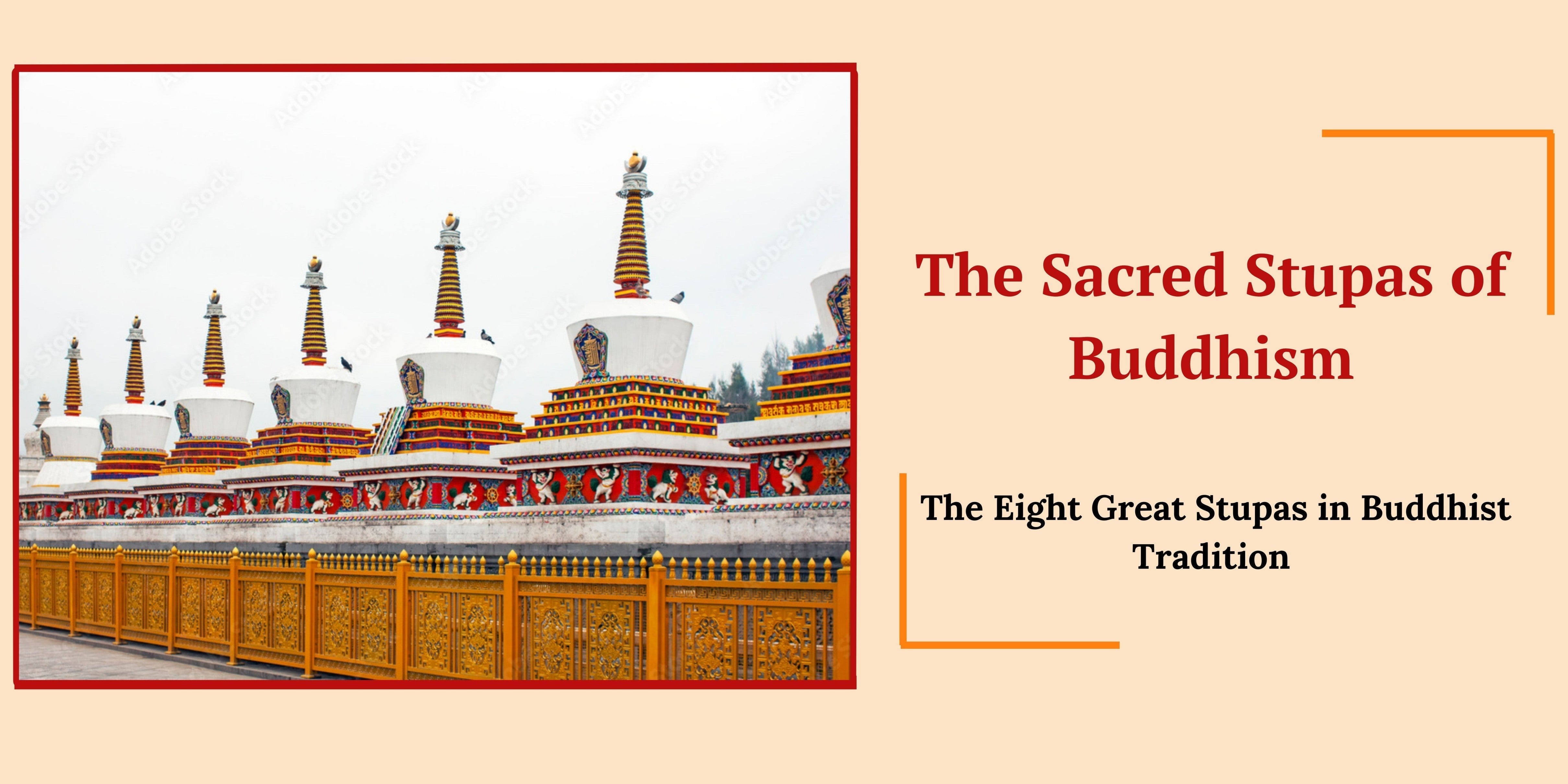Article: Everything you need to know about Wheel of Life!!!!

Everything you need to know about Wheel of Life!!!!
In the vibrant tapestry of Tibetan Buddhist art, the "Wheel of Life" also known as Bhavachakra Thangka stands as a mesmerizing embodiment of cosmic wisdom and spiritual insight. This intricate and symbolic artwork is not just a visual masterpiece but a profound guide that unravels the intricate threads of existence. Join us on a journey into the heart of the Wheel of Life Thangka, where art meets philosophy, and spirituality intertwines with creativity.
The Canvas of Existence:
The circular mandala of the Wheel of Life Thangka is a symbolic representation of life's perpetual cycle. Divided into six realms, it functions as a vivid reminder that life is an ever-changing journey marked by the ceaseless rhythm of birth, death, and rebirth—what Buddhists refer to as Samsara. The outer rim of the wheel illustrates the twelve links of dependent origination, highlighting the intricate interdependence and interconnected nature of all phenomena.

The Cosmic Dance:
Central to the Thangka is the figure of Yama, the lord of death, who firmly grasps the wheel. Yama's presence serves as a powerful reminder of life's temporary nature and the inevitable reality of death. This central figure not only symbolizes the law of karma but also depicts sentient beings caught in a cosmic dance, transitioning between realms based on their actions and the consequences of those actions. The intricate dance within the wheel signifies the perpetual rise and fall of life, emphasizing the ever-changing nature of existence.
The Twelve Links of Dependent Origination:
- Ignorance (Avijja): The root cause, where beings remain unaware of the true nature of reality.
- Formations (Sankhara): The actions and intentions that arise from ignorance.
- Consciousness (Vinnana): The awareness that arises due to volitional formations.
- Name and Form (Nama-rupa): The combination of mental and physical aspects that arise due to consciousness.
- The Six Senses (Salayatana): The six bases for sensory perception (eyes, ears, nose, tongue, body, and mind).
- Contact (Phassa): The interaction between the senses and external stimuli.
- Feeling (Vedana): The experience of pleasant, unpleasant, or neutral sensations from contact.
- Craving (Tanha): The desire or longing that arises from feeling.
- Grasping (Upadana): The clinging or attachment to desires.
- Becoming (Bhava): The actions that arise from grasping, shaping future existence.
- Birth (Jati): The coming into being as a result of previous actions.
- Old Age and Death (Jaramarana): The inevitable outcome of birth, leading to decay, aging, and death.

The Six Realms:
The six realms depicted within the Wheel of Life Thangka offer deep insights into the diverse experiences and states of consciousness that sentient beings journey through:
- Gods (Devas): Positioned at the peak, the realm of gods radiates pleasure, luxury, and bliss. However, this divine state is temporary, and even gods are subject to the cyclical nature of birth and death.
- Titans (Asuras): Adjacent to the gods, the realm of titans reflects a perpetual struggle and conflict. The titans represent the dual nature of pleasure and pain, symbolizing the transient nature of joy and the relentless pursuit of desires.
- Humans: Central to the wheel, the human realm signifies the middle path—a realm where enlightenment is possible. It serves as a meaningful reminder of the choices and actions that can lead to liberation, offering humans the unique opportunity for self-awareness and spiritual growth.
- Animals: Occupying a space beneath the human realm, the animal realm embodies ignorance and instinctual behavior. Animals are driven by basic desires, lacking the capacity for self-reflection. They serve as a poignant reminder of the consequences of a life governed by ignorance and habitual patterns.
- Hungry Ghosts (Pretas): The realm of hungry ghosts is marked by relentless desires and unfulfilled longings. Depicted with narrow necks and bloated bellies, these beings symbolize the never-ending craving for satisfaction, illustrating the suffering born from attachment.
- Hell (Naraka): Positioned at the lowest point of the wheel, the hell realm vividly portrays intense suffering and agony. Beings in this realm undergo the consequences of negative actions, experiencing the effects of anger, hatred, and violence. It serves as a distinct reminder of the karmic repercussions of harmful deeds and underscores the importance of cultivating compassion and virtue.

The Hub of Liberation:
At the heart of the Wheel of Life Thangka lies a hub of profound significance. Here, three animals—the rooster, snake, and pig—symbolize the three poisons that bind beings to the cycle of Samsara. The rooster signifies ignorance, the snake embodies desire, and the pig represents hatred. These three poisons are considered the root causes of suffering, serving as obstacles to liberation. Overcoming these poisons through wisdom, discipline, and compassion becomes the key to breaking free from the cycle of Samsara and attaining liberation.

Conclusion:
The Wheel of Life Thangka is a rich tapestry of symbolism that invites deep contemplation and reflection. Its intricate details and profound imagery serve as a roadmap for understanding the nature of existence, offering valuable guidance on the path to liberation. As we explore the cosmic dance of wisdom and reflection within the Thangka, we are encouraged to turn inward, examining our own lives, actions, and the profound teachings embedded within its sacred geometry.
May the Wheel of Life Thangka not only stand as a visual masterpiece but also as a powerful meditation, guiding us through the cycles of existence toward enlightenment and liberation. As we peel back its layers, may the wisdom within this sacred artwork illuminate our understanding of life’s eternal dance, inspiring us to walk a path of awareness, compassion, and transformation.

